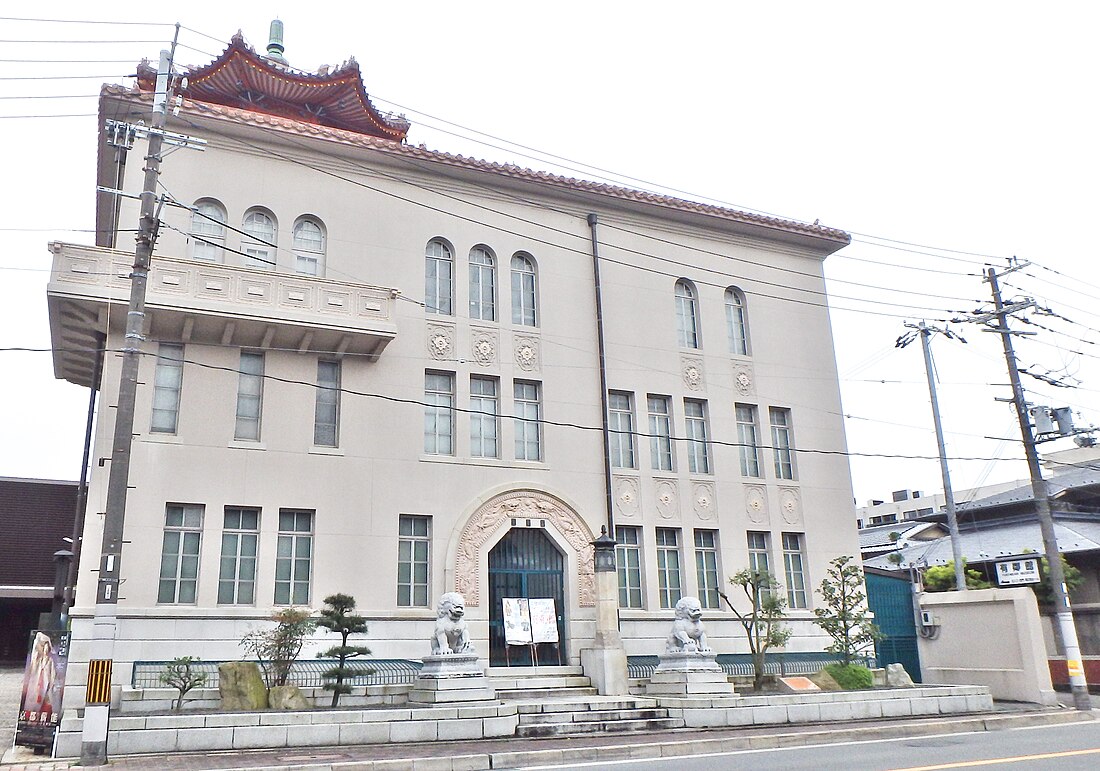Yūrinkan Museum
Mosque in Kyoto, Japan From Wikipedia, the free encyclopedia
The Yūrinkan Museum (有鄰館) or Fujii Saiseikai Yūrinkan (藤井斉成会有鄰館) is a private museum of East Asian art in Kyōto, Japan. Established in 1926 by entrepreneur and politician Fujii Zensuke (1860–1934), it is the second oldest private museum in Japan, after the Ōkura Shūkokan.[1] The collection, particularly strong in Chinese art from the Shang to the Qing, includes one National Treasure and nine Important Cultural Properties.[2]
| Yūrinkan Museum | |
|---|---|
藤井斉成会有鄰館 | |
 | |
 | |
| General information | |
| Address | 44 Okazaki Enshōji-chō, Sakyō-ku |
| Town or city | Kyoto, Kyoto Prefecture |
| Country | Japan |
| Coordinates | 35°00′42″N 135°46′53″E |
| Opened | 1926 |
| Design and construction | |
| Architect(s) | Takeda Goichi |
| Website | |
| Official website | |
Name
The museum's name is taken from the Analects of Confucius and "expresses this feeling of good neighbourly relations".[3]
Collection
The Yūrinkan's collection of Chinese art includes bronzes, ceramics, Buddhist statues, seals, calligraphic works, textiles, and paintings, as well as nearly a hundred manuscripts from Dunhuang, including twenty-three in Uighur and others in Tibetan, Mongolian, and Sanskrit.[3][4] The museum's National Treasure consists of a fragmentary Tang manuscript of a commentary on the Spring and Autumn Annals.[5]
Buildings
The main building or "Fujii Saiseikai Yūrinkan Building No.1" of 1926 was built to a design by Takeda Goichi (武田五一) to house Fujii Kensuke's (藤井善助) collection of Chinese art. In a Chinese style both inside and out, it is topped by an octagonal pavilion with thirty-six thousand yellow glazed roof tiles dating to the time of the Qianlong Emperor. The building is a registered (as opposed to designated) Municipal Tangible Cultural Property.[1][3]
The annex or "Fujii Saiseikai Yūrinkan Building No.2" dates to the beginning of the Taishō era (1912–1926). Formerly the western-style building of the Yokoyama Mining Office (横山鉱業部), it was relocated from Kanazawa to Kyōto at the time of the enthronement of the Shōwa Emperor in 1928, to accommodate the Minister of Finance. It is registered as a National Tangible Cultural Property, alongside the 1928 storage facility.[6][7]
Access
The museum is open to the public on the first and third Sunday of each month, excepting January and August.[3]
See also
References
External links
Wikiwand in your browser!
Seamless Wikipedia browsing. On steroids.
Every time you click a link to Wikipedia, Wiktionary or Wikiquote in your browser's search results, it will show the modern Wikiwand interface.
Wikiwand extension is a five stars, simple, with minimum permission required to keep your browsing private, safe and transparent.
